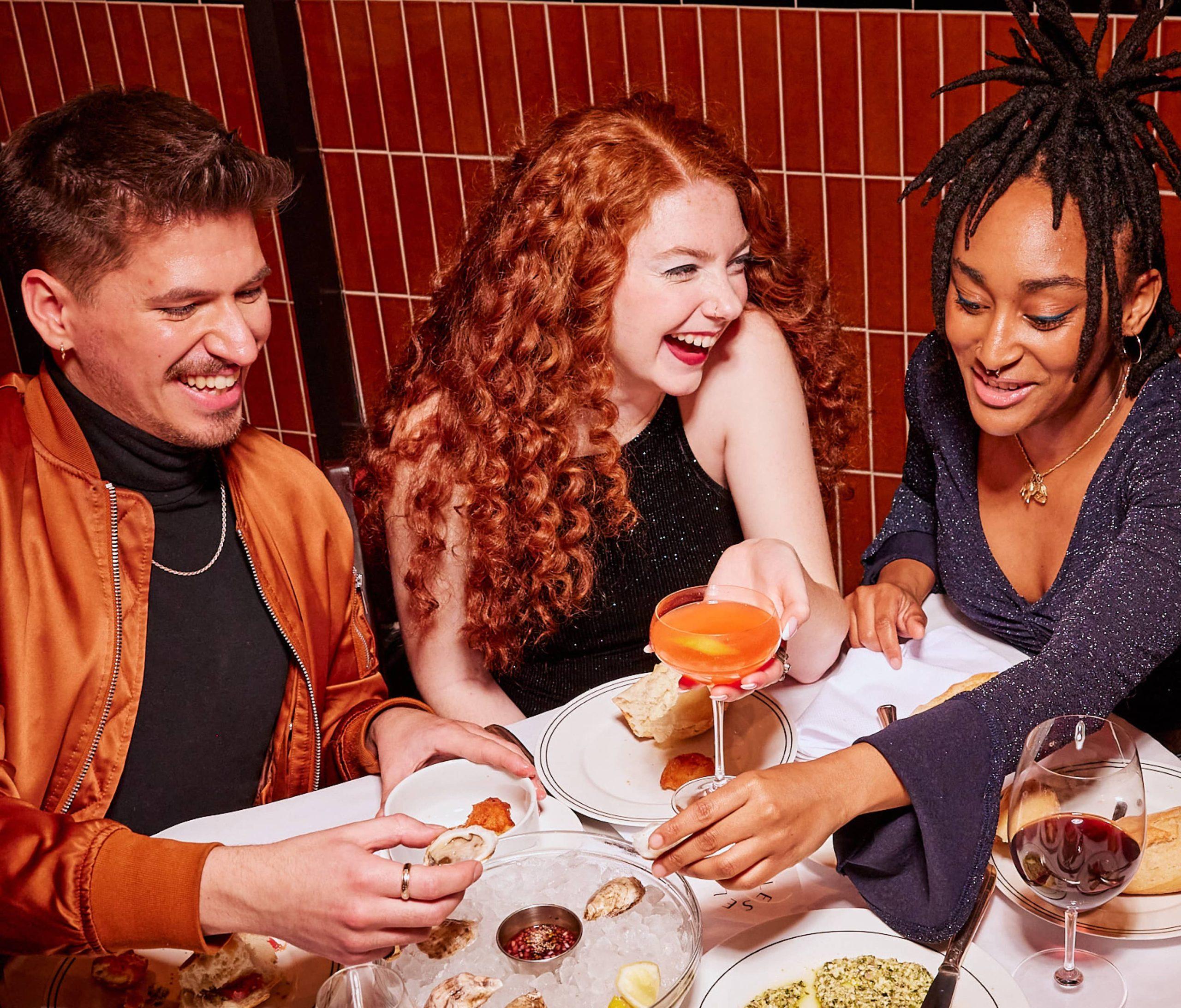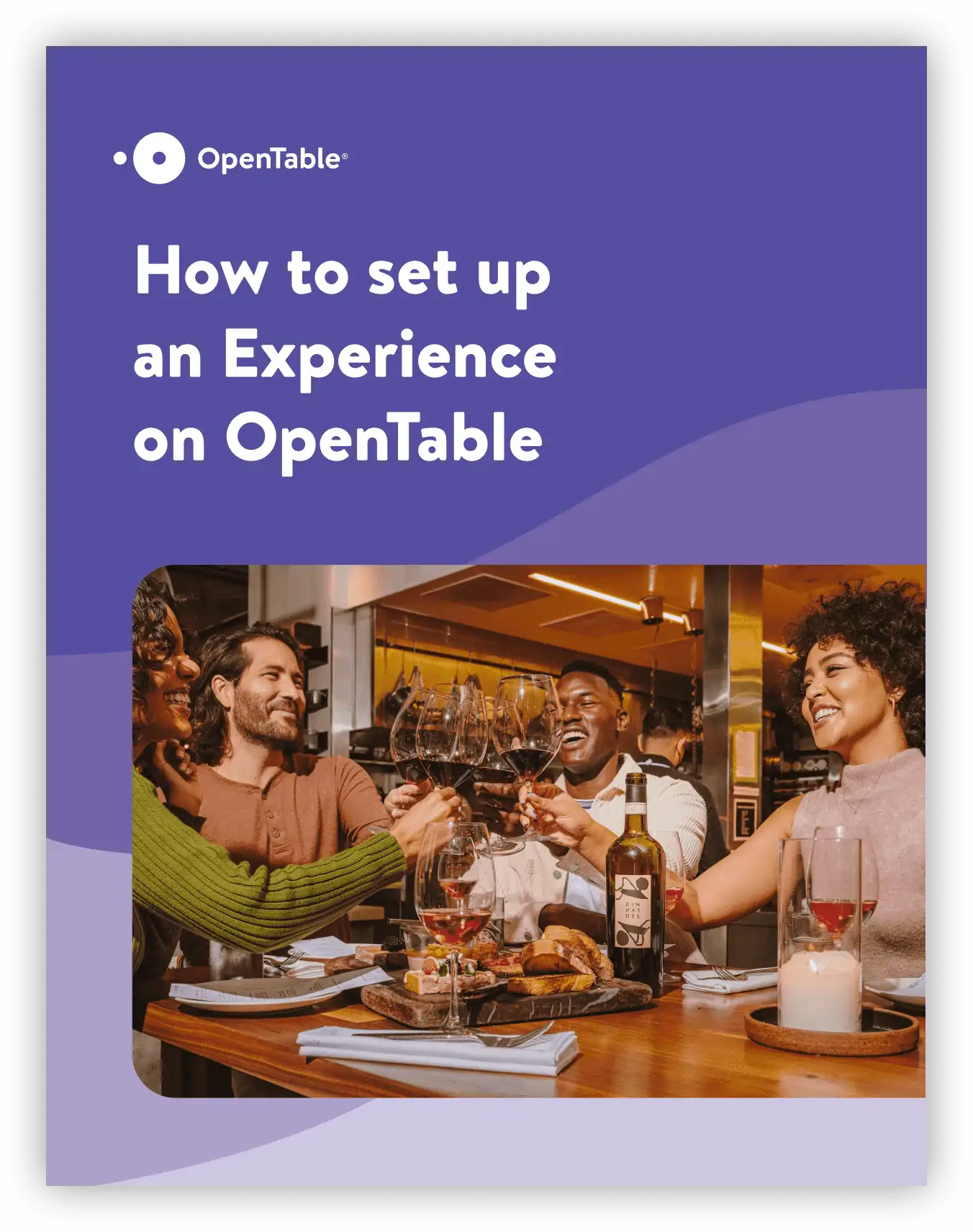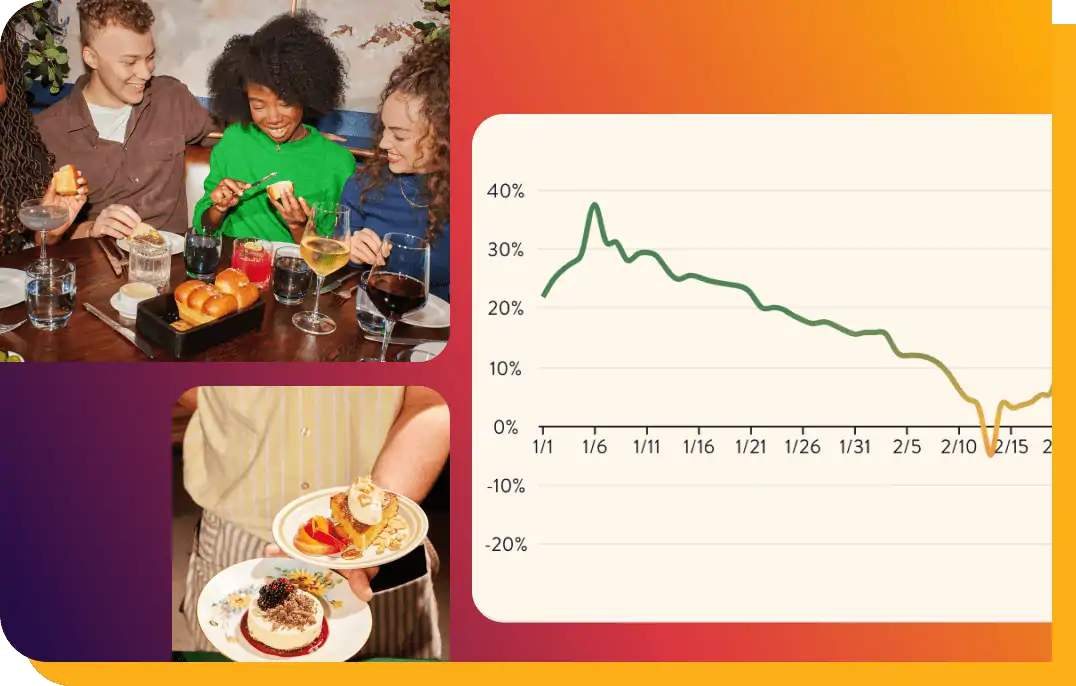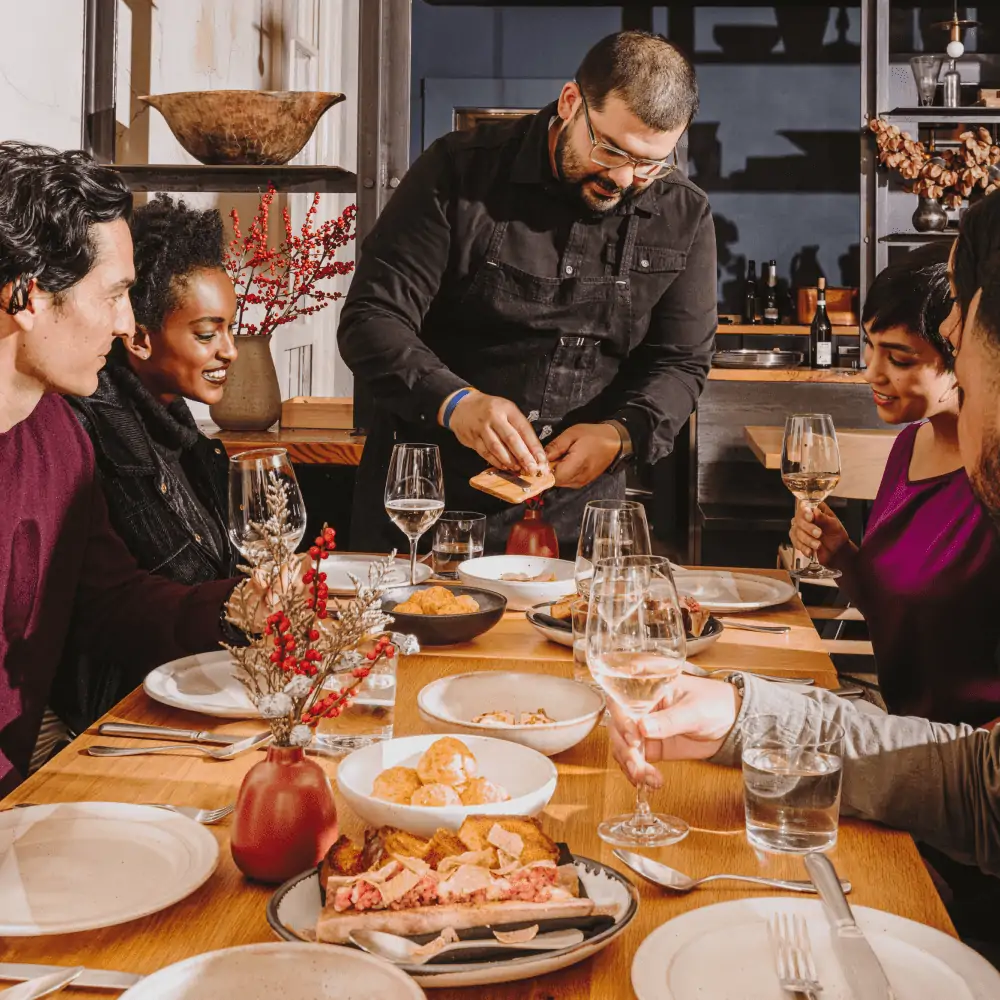Every day, lots of potential diners browse Facebook and Instagram, looking for their next great meal. For restaurants, there’s a real opportunity to tap into these scrollers and interest them in dining at your spot. But with so many targeting options and creative choices, where do you start?
With Meta ads, you can reach new diners where they spend their time online. Meta advertising can help you fill tables with diners from Facebook and Instagram, but success requires a good strategy—and that can be hard to achieve if you’re new to Meta ads.
With that in mind, we’ve created a step-by-step guide to Meta ads so you can drive real results for your restaurant.
Quick links
- What are Meta ads?
- Getting started with Meta ads and creating clear goals
- Choose your campaign type
- Set your budget wisely
- Target the right audience
- Create compelling ad content
- Choose your ad placement
- Monitor and optimize performance
- Common mistakes to avoid
- Best practices for success
What are Meta ads?
If not familiar with Meta ads, here’s a quick 101. A Meta ad is a paid promotional message that appears across Facebook and Instagram. These ads help restaurants and other businesses reach potential guests and customers through photos, videos, and text that show up in feeds, stories, and other placements across the two social media platforms.
With Meta’s sophisticated targeting options, you can show your ads to specific audiences based on location, interests, and behaviors to narrow down the type of people you want to target.
Getting started with Meta ads and creating clear goals
Before getting into ad creation mode, identify what you want to achieve from your Meta ads. Are you looking to:
Drive more reservations during slower periods
Want to fill those empty Monday night tables or boost your early-evening bookings? Meta ads can help target potential guests during specific times, turning slow periods into steady service.
Promote a new seasonal menu or special event
If you’re launching a new menu or hosting a wine dinner, Meta ads are perfect for showcasing what’s new and exciting at your restaurant. Create buzz and drive advance bookings.
Build awareness for a newly opened location
Let’s say you’re opening a new restaurant or expanding into another neighborhood. Meta ads can reach potential guests in your target area who might not know about your spot yet.
Increase takeout and delivery orders
Boost your off-premise business using Meta ads, which help reach people searching for convenient dining options, complete with direct links to your ordering platforms.
Did you know? Studies have shown that limited-time offers in ads can increase conversion rates by up to 332%. Promoting specific menu items with offers could help ramp up engagement.
Choose your campaign type
Meta offers several campaign types to help your restaurant meet its specific goals. From building awareness for new openings to driving reservations and engaging with guests through messages, choosing the right type will see to it that your ad spend aligns with business needs.
Awareness
Creating awareness is ideal for new restaurant openings or reaching diners in expanded service areas. Plus, there’s an opportunity to get your brand in front of potential guests who may not know about you yet.
Traffic
Focus on traffic campaigns when you want to drive people to your website or reservation page. It works best for filling tables during special events or getting diners to explore your menu and make a reservation.
Engagement
This ad type is great for building intrigue around new menu items or getting people excited about upcoming events. Focusing on engagement encourages likes, comments, and shares, which helps create a community around your restaurant and amplifies your reach through social proof.
Messages
Messages are useful if you handle a high volume of guest inquiries through Facebook Messenger or Instagram DMs. Sending messages helps you connect directly with interested diners, making it easier to answer questions about things like reservations, dietary needs, or private dining.
Set your budget wisely
You can control exactly how much you spend on Meta ads without worrying about going over budget. If it’s your first time, you might start small with as little as $5 to $10 per day to test what works.
What does that look like? Let’s say you want to promote a new weekend brunch menu. You might start with $10 per day for a week, spending $70 total to test different images and messages. Once you see which ads drive the most reservations, you can increase spending on the most successful versions.
Meta offers two types of budgets to help manage your spending:
- Daily budget: Set a maximum amount to spend each day. For example, setting a $20 daily budget means Meta will pace your ad spending throughout each day, never exceeding that amount.
- Lifetime budget: Choose a total budget for your entire campaign. For instance, you might set $200 for a two-week campaign promoting a special event, letting Meta optimize spending across that period.
For restaurants just starting with Meta ads, it’s worth:
- Testing with a modest daily budget ($10 to $20)
- Running campaigns for at least five to seven days to gather meaningful data
- Measuring results before scaling up successful ads
This approach will help you learn what resonates with your audience while minimizing financial risk. It’s good to dip your toes in lightly before going for larger campaigns once you start to see results.
Target the right audience
Meta’s targeting tools help you connect with the right potential guests. Instead of casting a wide net, you can focus your ad spend on diners most likely to become regulars. Some things to consider include:
Location
Focus on people within reasonable dining distance (usually five to 15 miles, depending on your market and concept). Consider adjusting your radius based on your restaurant’s draw and local competition in urban versus suburban areas.
Age and demographics
Align with your ideal guest profile so your ads reach people most likely to appreciate your concept. Having a better understanding of your core diner helps allocate budget more effectively across different age groups and lifestyles.
Interests
Target people interested in dining out, or specific cuisines, wine, and special occasions. You’ll reach foodies and enthusiasts who actively seek new dining experiences in your area when you focus on relevant interests.
Custom audiences
Upload your email list to reach existing guests or create “lookalike” audiences to find similar diners. Leveraging your current guest data helps you expand your reach while maintaining the quality of potential new customers.
Pro tip: Start with a fairly broad audience, then use data to refine your targeting based on who engages most with your ads.
Create compelling ad content
The most effective restaurant ads combine eye-catching visuals with persuasive copy that drives action. Here’s how to create ads that convert:
Writing effective ad copy
Keep your primary text under 125 characters for best performance, as shorter copy typically performs better. Lead with your most important message, whether that’s a special offer or new menu announcement.
Include specific details about promotions and use action words that drive urgency, like “Book now” or “Limited time only.” Adding social proof through review quotes or awards can also help build trust. And, of course, remember to test different calls-to-action to see what resonates with your audience.
Choosing strong visuals
Your visuals need to stop scrollers in their tracks, so use high-quality, well-lit food photography that makes dishes look appealing. You can offer variety in your content with both plated dishes and action shots from the kitchen.
Take shots of people enjoying their dining experience. This helps potential guests envision themselves at your restaurant. Feature your atmosphere and unique spaces to give a sense of the full experience, and test both photos and short videos to see what drives the most engagement.
Testing and timing
Experiment with different ad formats to find what works best, like running the same promotion with different images or copy to compare performance. Consider timing your ads around meal periods, be it promoting lunch specials mid-morning or happy hour as the workday winds down.
It’s also worth paying attention to seasonality and local events that might affect dining habits. Testing different posting frequencies and campaign durations will help you find the right balance between reaching your audience and maximizing your budget.
Choose your ad placement
Deciding where across Facebook and Instagram your ads appear will help you reach potential diners more effectively. Meta offers several placement options, each with unique advantages for restaurants looking to showcase their offerings.
- Facebook News Feed are good for driving immediate reservations as users are often actively browsing and planning
- Facebook Stories work when you want to showcase quick peeks into your kitchen or highlight daily specials
- Instagram Feed are a good idea if you want to display high-quality food photography and build your brand
- Instagram Stories benefit restaurants sharing behind-the-scenes content or limited-time offers
- Instagram Reels highlight your restaurant’s personality through short, engaging videos of food preparation or ambiance
Pro tip: Start with automatic placements to let Meta optimize where your ads appear based on performance. You can then adapt as you gain more insights.
Monitor and optimize performance
The key to success with Meta ads is continuous optimization. Monitoring your ad performance regularly helps you understand what’s working and where to adjust, so every dollar of your advertising budget drives real results for your restaurant. Pay attention to metrics like:
- Cost per result (reservation, website visit, etc.
- Click-through rate
- Engagement rate
- Audience response
Use this data to:
- Adjust targeting if needed
- Test different images and copy
- Scale up spending on top-performing ads
- Pause underperforming campaigns
Remember that performance patterns can shift with seasons, as some periods are busier than others. Local events also have the potential to drive more traffic, while changing dining trends can affect habits. For instance, what works in summer might need adjustment for winter—stay flexible and ready to adapt your strategy based on real-time data.
Common mistakes to avoid
If you’re new to Meta ads, it’s easy to make mistakes. After all, there is a learning curve and some patience required. Don’t be deterred if everything doesn’t go to plan straight away. To help with your venture into Meta ads for restaurants, avoid making these frequent advertising missteps:
Focusing only on nice-looking pictures
While food photos are important, your ads need a clear call to action to drive results. If someone’s eye is caught by a great photo of one of your dishes or the interiors of your spot, the aim is to guide them to make a definitive action. Otherwise, you risk losing potential diners who might admire your content but never make it through your door. Every ad should have a clear next step, whether that’s “Book now,” “Order online,” or “Learn more about our new menu.
Remember: Beautiful visuals attract attention, but compelling calls to action convert browsers into diners. Make it easy for your audience to take that crucial next step.
Targeting too broadly
Being too broad with your targeting is a common mistake. While it might be tempting to reach as many people as possible, showing ads to everyone within a 50-mile radius often wastes your budget on people unlikely to visit your restaurant. Most diners won’t travel more than three to 3.3 miles for a meal. Instead, focus your budget on reaching people within a realistic dining radius, taking into account your location, concept, and local competition.
Pro tip: Strategic targeting means you’ll likely see better results and make every advertising dollar work harder.
Don’t forget to monitor your campaigns
Don’t just launch your campaign without any further action. Treating Meta ads like a one-time task is a recipe for wasted budgets. While it’s tempting to create your ads and move on to other tasks, monitoring and optimizing are necessary for good ROI. Successful Meta advertising requires ongoing attention, from testing different images and copy to adjusting targeting based on performance data.
Best practice: Make time each week to review your results and identify what’s working so you can refine your approach if needed.
Inconsistent branding
Your Meta ads should feel like a natural extension of your restaurant’s personality. While it’s tempting to try different approaches, maintaining consistent visuals and tone across all your advertising builds trust with potential guests. From your food photography style to the language you use, every element should reflect your restaurant’s unique character and values.
Remember: Consistency helps diners recognize and connect with your brand, making them more likely to choose your restaurant when deciding where to eat.
Best practices for success
Even small adjustments can significantly improve your ad performance. Regularly testing and measuring what works best for your restaurant helps maximize your return on advertising dollars spent.
- Try both image and video ads for different messages. Food shots might work best as still images, while kitchen action shines in video.
- Keep your content fresh by changing creative elements regularly. This prevents ad fatigue and keeps potential diners engaged.
- Adjust campaigns around key dining periods. Plan ahead for holidays and peak times when competition for ad space increases.
- Add urgency through limited-time promotions. Special offers and events can drive immediate action from interested diners.
- Track results beyond just clicks and likes. Connect your ad performance to actual reservations and revenue to understand the true impact on your business.
Putting it all together
Success with Meta ads comes from planning and consistent optimization. Start with clear goals before choosing the right campaign type and creating compelling content that resonates with your target audience.
Monitor performance consistently and adjust your strategy based on what the data tells you. With practice and a little bit of patience, Meta advertising can become a valuable resource for filling your tables with eager new diners and keeping them coming back for more.




